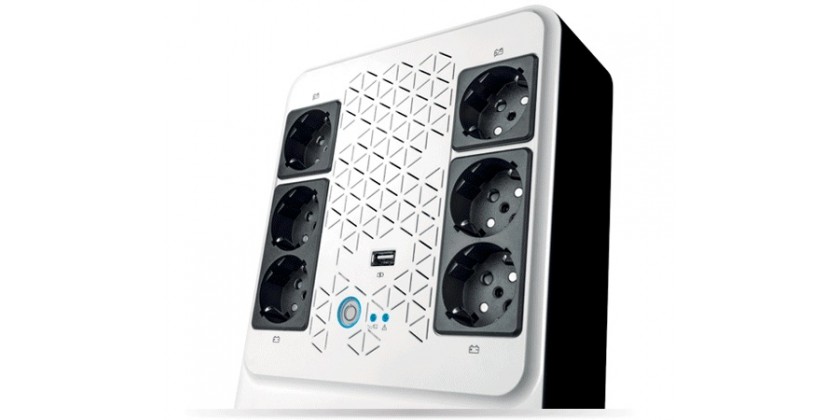
How to choose a UPS

Sizing of a UPS / UPS
1.- Calculation of the consumption of your devices in VA
The UPSs are classified according to the apparent Power 'S' that can offer measurement in voltamperios (VA). This magnitude is related to the real power 'P', measured in watts (W), by the Power Factor (FA, f.d.p. or cosine of φ).
In case you know the consumption of some of your devices in voltamperios (VA), you just have to add them all. If, on the other hand, you know the consumption of other devices in watts (W), you must divide the total value by the Power Factor:
VA = W / FA
The Power Factor is set by the UPS and varies depending on the type, range and model of the UPS. The higher this value is, the more efficient the UPS is, the more real power (W) it offers to protect equipment and the less energy it will consume when powered. For example, a basic UPS with a capacity of 1000VA, can offer 600W real while a more efficient one can get to offer 900W real with the same 1000VA. Basic UPSs have a Power Factor of 0.6 and professionals around 0.8-0.9. If you have not decided on the range of UPS you are going to acquire, you can use a FA = 0.6 without fear of making a mistake and later, when you have preselected several devices, adjust it again.
If you do not know the consumption of your devices, consult the user manual or the labels with the electrical characteristics that are usually next to the power supply or transformer. In both places, you can find the power in W or the current in amps (A) and the working voltage (V) (the nominal voltage in Spain is 230V). In this case, you can easily calculate the consumption as follows:
VA = V x A
Add all the values in volt-amps (VA) to get the total apparent consumption of all your devices.
2.- Calculation of the minimum power of the UPS
In case the devices that you have to protect are electronic or have a constant consumption throughout their operation, add a 20% safety margin to the consumption calculated in VA in the previous section:
Load = VA x 1.2 (margin)
This margin is included to prevent the UPS from overloading against specific power demands of your devices and ensuring that it works at a comfortable point to last a long time.
In case you have planned future extensions or want to leave room just in case, this is the right time. Once you acquire the equipment the cost of expansion is usually greater than the cost of acquiring a slightly oversized equipment. For high powers (from 20 KVA) there are modular UPSs that allow to expand the capacity of the system from 20 to 20KVA, to cover the planned power extensions.
Important note: The UPS must be sized to support the maximum power consumption that all connected devices can demand at the same time, even if most of the time they do not turn on, do not do it at the same time or their normal consumption is less than the maximum . If you need to protect a device with electric motors or pumps, keep in mind that the consumption of these elements when starting can multiply between 3 and 5 times its nominal power. To properly size the UPS in these cases, we recommend that you check the maximum consumption of the device or measure it with an amperemeter or consumption meter.
Other important aspects
a.- Usual consumptions
So that you have a reference when buying a UPS, a home PC or modern office computer (Internet, Office, email, movies and music) consume between 100W and 200W with its LED monitor. In case the equipment is older or assembles advanced components, this consumption could go up to 300W.
In case your computer is a PC prepared for gaming or a workstation, we do not recommend a UPS below 500W to support the intensive use of the PC and have sufficient autonomy time to finish tasks, save work and turn off the team.
NAS servers, meanwhile, usually have consumption between 30W and 50W for models with one to 4 bays and 50W to 100W for models with 4 to 8 bays. For professional models and / or more bays, it is best to consult the technical specifications in the manual or the manufacturer's page.
Finally, other household equipment such as WIFI / fiber modem / router is consuming around 25W.
b.- Backup time or autonomy of a UPS
A correctly sized UPS provides between 5 and 10 minutes of autonomy, although it always depends on the load connected. When a longer backup time is needed, you can select one of the following options:
Choose a larger UPS model that will generally mount more batteries or more capacity.
Acquire battery modules compatible with the UPS. This option is usually only available in professional online UPS and online UPS from